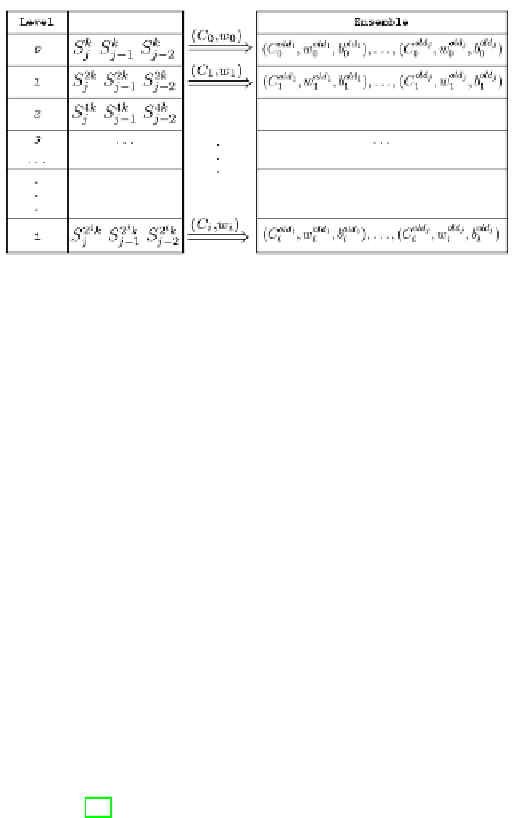Information Technology Reference
In-Depth Information
Fig. 4.
The overall system architecture
Activation Threshold Algorithm.
1:
if
(oneModel() =
true
)
then
2:
θ
←
0.00; activation threshold initialized
3:
oldActModels
←
1
4:
return
5:
end if
6:
actModels
←
)
7:
if
(
actModels
>
oldActModels
)
then
8: θ
←
θ + 0.01; increment threshold value
9:
else if
(
actModels
<
oldActModels
)
then
10: θ
←
θ
div
2; decrement threshold value
11:
end if
12:
oldActModels
←
actModels
13:
return
getActiveModel(
θ
Fig. 5.
Pseudo-code of the activation threshold algorithm
good reliability of the system, the
θ
threshold represents the real key factor for the
quality of our approach.
In our experiments [18], we noticed that the reliability of the system is heavily influ-
enced by the
value. As we shall present in Section 4.3, independently from the data
set employed, activation values which are too high (or too small) decrease the predictive
power of the ensemble. On the one hand, in case of relatively stable data, small acti-
vation threshold values limit the use of large sets of classifiers. On the contrary, large
threshold values damage the selective ensemble in the case of concept drifts. In the cited
experiments, the
θ
value was fixed by the user and it did not change through time. Only
our experience and the experimental results drove the selection of the right value.
In this work we introduce an adaptive approach for varying the value of the activa-
tion threshold through time, thus influencing the overall behavior of the entire system,
based on data change reaction. The basic idea of the adaptive method is similar to the
additive-increase / multiplicative-decrease algorithm adopted by TCP Internet protocol
for managing the transfer rate value used in TCP congestion avoidance.
The pseudo-code of the method for managing the activation threshold is proposed in
Figure 5. The algorithm is quite simple. When the first model is inserted in the structure,
θ


